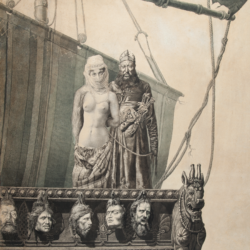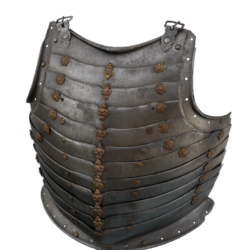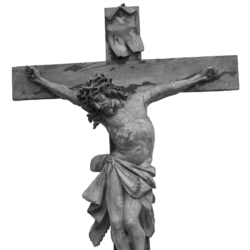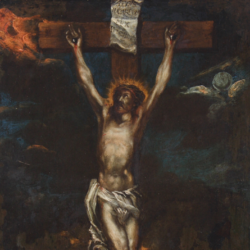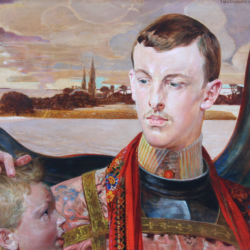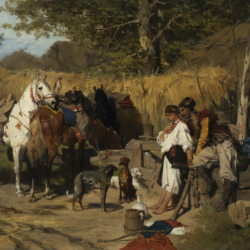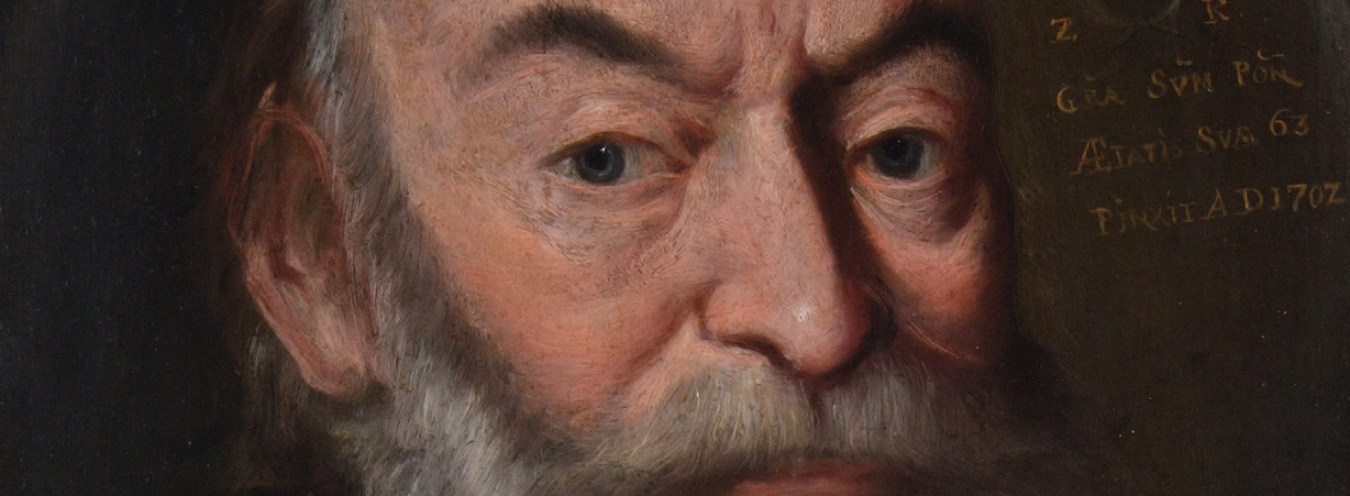
Mystique of death II (Magdalena Saganiak’ Samuel Zborowski)
Isn’t the physical deformity, the deformity of the physical body, of the body of the nation, the signal for the reviving Spirit? This is the course of events predicted by the mystics. For instance, Słowacki in his drama Samuel Zborowski. Magdalena Saganiak wrote about this drama:
Dying on the cross, Christ ruined his body although his head (contrary to Słowacki’s protagonist – G. B.) had not been cut away. He did not ruin it in order to re-create it because this form is not his true essence. That is why the Chancellor’s deed, which led to the deformation of Samuel’s body, simultaneously constituted the sin and the tragic fault, but also the liberation of the Spirit. Both for Samuel and for the Chancellor, it became clearer what or who they essentially are and what is the essence of the transient character of their human status.[1]
Sienkiewicz is not a mystic; he does not go as far in his conceptions of religious esotericism as Słowacki did, but the ethos of chivalry at the borders of the Polish-Lithuanian Commonwealth equally well accustoms his protagonists to death. The famous “This life is nothing!,” which Michał Wołodyjowski (Volodyovski), preparing for his death, asks to be passed to Basia, does not entail disrespect to life, but it is rather the harbinger of new events and new life. What Magdalena Saganiak wrote about the mystic poet proves partly correct in the case of Sienkiewicz’s historical novels: “Słowacki depicts the dangerous life of a knight, which does not consist in the despise of death, resulting from ignorance, but rather in life with death being its other dimension.”[2] At the end of the last volume of the Trilogy, something evidently comes to an end so that something else could begin. This “something” has a historical dimension; it is not exclusively spiritual – as in Słowacki’s works. It is equally incredible, driven by the inner force and supernatural sanction, like the visions of a mystic. Let us note that between the scene of Wołodyjowski’s death and the scene of his burial, there is no temporal gap, no chiasmus, no break. We would wait in vain for the information regarding the preparations for the burial although, in the Polish historical tradition, a considerable amount of time usually elapsed between death and burial (sometimes even a month, though, this period could be shorter in war conditions). There is no graphic sign delimiting the text (a new chapter, spacing, an asterisk) which would signify the flow of time. In terms of narration, both events remain parts of the same whole. Wołodyjowski died, and he was buried in a double coffin: leaden and wooden, which was not typical. He “lay there high among the tapers, in glory immeasurable, but in the silence of death,”[3] and he was waiting, symbolically speaking, for Sobieski, the hetman, to enter. And when he did, “The eyes of all were turned to him; a quiver shook the people; and he went with clatter of spurs to the catafalque, lordly, mighty, with the face of a Caesar.”[4]
Saganiak notices a connection between Słowacki’s and Sienkiewicz’s protagonists: “They have something in common as the knights of great and powerful Poland, Christian and just, waging war on antique and modern paganism and on contempt for God.”[5] We need to remember not only Kmicic, whom we could interpret as the equivalent of Zborowski, adapted for the needs of a popular novel, but also the dramatic sermon delivered by Priest Kamiński in the collegiate church in Stanisławów, where the “Little Knight” was temporarily buried, and his horrific prophecy:
O Lord, they will turn churches into mosques, and chant the Koran in places where till this time the Gospel has been chanted. Thou hast cast us down, O Lord; Thou hast turned Thy face from us, and given us into the power of the foul Turk. Inscrutable are Thy decrees; but who, O Lord, will resist the Turk now? What armies will war with him on the boundaries? Thou, from whom nothing in the world is concealed,—Thou knowest best that there is nothing superior to our cavalry! What cavalry can move for Thee, O Lord, as ours can? Wilt Thou set aside defenders behind whose shoulders all Christendom might glorify Thy name? O kind Father, do not desert us! show us Thy mercy! Send us a defender! Send a crusher of the foul Mohammedan! Let him come hither; let him stand among us; let him raise our fallen hearts! Send him, O Lord![6]
The arrival of the Savior prevented this prophecy from coming true. The alliance between Poland and God was renewed in the spirit of enlightened providentialism and mystic romanticism.
Przypisy
- M. Saganiak, “Makabra w Mistycznym Teatrze Juliusza Słowackiego” [Macabre in Juliusz Słowacki’s mystic theatre], Polska Sztuka Ludowa. Konteksty: Antropologia kultury. Etnografia. Sztuka 1995, vol. 3/4, p. 78.
- Ibidem, p. 78.
- H. Sienkiewicz, Dzieła [Collected Works], vol. 19, Pan Wołodyjowski [Fire in the Steppe], part 3, p. 245; trans. Jeremiah Curtin.
- Ibidem, p. 248.
- M. Saganiak, op cit., p. 78.
- H. Sienkiewicz, Dzieła [Collected Works], Pan Wołodyjowski [Fire in the Steppe], vol. 3, p. 248; trans. Jeremiah Curtin.

